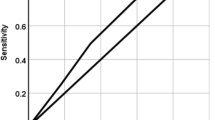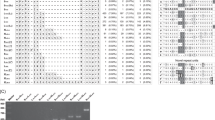Abstract
An association between schizophrenia and a rare perfect ten-repeat allele, K1p, of a tetranucleotide microsatellite polymorphism in the tyrosine hydroxylase gene has recently been reported. The rare allele was found only in schizophrenic patients. During treatment with antipsychotic drugs patients with the rare allele displayed lower plasma homovanillic acid (HVA) and 3-methoxy-4-hydroxyphenylglycol (MHPG) levels than those without. We examined Swedish schizophrenic patients (n = 117) and healthy control subjects (n = 76) for the same polymorphism. In contrast to the previous studies, the K1p frequency in patients (4 of 117) tended to be lower than among controls (9 of 76). With all six alleles (K1p, K1i, K2–5) considered there was a significant difference between schizophrenic patients and control subjects. There was no significant difference in HVA and MHPG levels in cerebrospinal fluid from a subset (n = 64) of control subjects with and without the rare allele. The discrepant results warrant further investigation of the tyrosine hydroxylase gene.
Similar content being viewed by others
Author information
Authors and Affiliations
Additional information
Received: 5 June 1997 / Accepted: 12 December 1997
Rights and permissions
About this article
Cite this article
Jönsson, E., Geijer, T., Gyllander, A. et al. Failure to replicate an association between a rare allele of a tyrosine hydroxylase gene microsatellite and schizophrenia. European Archives of Psychiatry and Clinical Neurosciences 248, 61–63 (1998). https://doi.org/10.1007/s004060050018
Issue Date:
DOI: https://doi.org/10.1007/s004060050018




